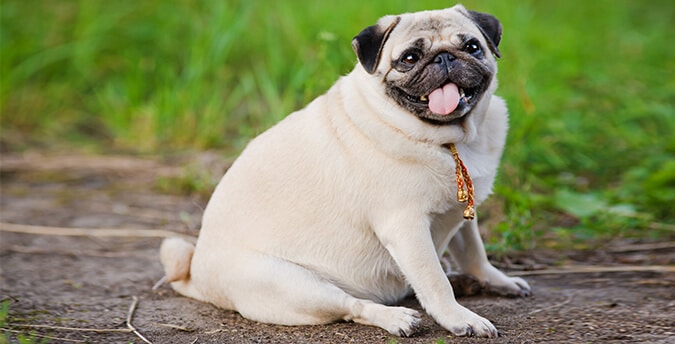Quick Ways to Check if Your Dog is Overweight

Obesity is a major issue not only in humans but also in dogs. Feeding your dog too much, as many eager owners might do, can actually harm them quite a bit. Plus, pet dogs are prone to not getting enough exercise, so they might lead a sedentary life that contributes to their obesity.
Becoming fit by performing exercises and watching food intake are just some of the things people do to make sure that they remain healthy. Some may even spend a lot of money for gyms, exercise equipment, and even organic products. While a lot of individuals are doing it for themselves, it may be easy to neglect their pet or dog’s health. As we spend so much time on ourselves, we might not notice that we are already giving our dog the wrong food, we may be overfeeding, or we may even be forgetting to take them on walks.
Just like how excess weight can have detrimental effects on a person’s health, it can also cause harm to our loyal canine friends. Obesity can open up possibilities for various types of health problems such as joint problems, a shorter lifespan, respiratory issues, and diabetes. As your dog slowly becomes overweight, it also increases its chance of developing health problems. Some may not even realize that their pet’s health concern is because of its excess weight.
It is therefore important to make sure that your dog doesn’t become overweight. You have to constantly check if they are putting on excess weight that may potentially become unhealthy. But how can you tell if your dog is overweight? What are some of the signs you should watch out for? Check out the information below:
EXAMINE THE RIBS
Determine your dog’s body condition score or BCS by pressing on their rib cage. Ideally, there should be a thin barrier of fat on the bones. You should be able to feel and see those ribs without too much effort. If the fat is thicker and you have to press hard to reach the ribs, there’s a high likelihood of obesity or excess weight.
Perform the same check on the spine, hips, and shoulders. There shouldn’t be any major fat deposits in these regions. You should be able to feel the bones with a little pressing.
TAIL BASE
Check the base of the dog’s tail, which comes at the spine’s end. This area should be smooth, with just a bit of fat covering it. If there’s any excess fat, making it hard to feel the tail base, your dog is probably obese.
IDENTIFY THE WAIST
Just like humans, dogs should also ideally have a defined waist. When your dog stands up to beg or reach for something, take a look at its waist. This should be a smaller width of the body locating between the ribs and the hips.
If this hourglass-like figure isn’t apparent, you may conclude that the dog is obese. However, this shape might be difficult to see if the dog has a very thick and shaggy fur coat. Also, keep in mind that some dog breeds are naturally susceptible to rotundity or roundness. They might hence display less of an hourglass figure than other, sleeker breeds.
ABDOMEN TUCK
Sit by your dog when he’s lying on the floor, and make sure that you’re at his level as much as possible. Now check his abdomen, the part behind the rib cage. This part should be a little tucked up, meaning higher than the rib cage’s bottom.
It may help to run one hand (palm side up) along the bottom of his rib cage towards his abdomen—if your hand curves up towards your dog’s back, then he has an abdominal tuck. If your hand goes in a straight line, he has no tuck and is likely obese.
DIFFICULTY GROOMING
All dogs should be able to groom and scratch themselves. If they can’t reach certain areas of their body, without any other underlying condition, the most common reason is probably their weight. Obese dogs would probably not be able to reach around when they need to, thus requiring a helping hand to groom them.
CONCLUSION
Some dog owners might be under the misconception that they can determine a dog’s obesity by looking at their weight. Just the weight, though, isn’t an accurate indicator of obesity, as these factors should also include age, sex, general build, breed, and many others.
If you do find out that your dog is obese, consult a vet to make up a proper weight-loss diet plan for them. On your own, you should start taking them out for more exercise and make sure they get a healthy diet without any excess or fattening food. A little effort in this area will soon result in a more active, happier, and healthier dog.
